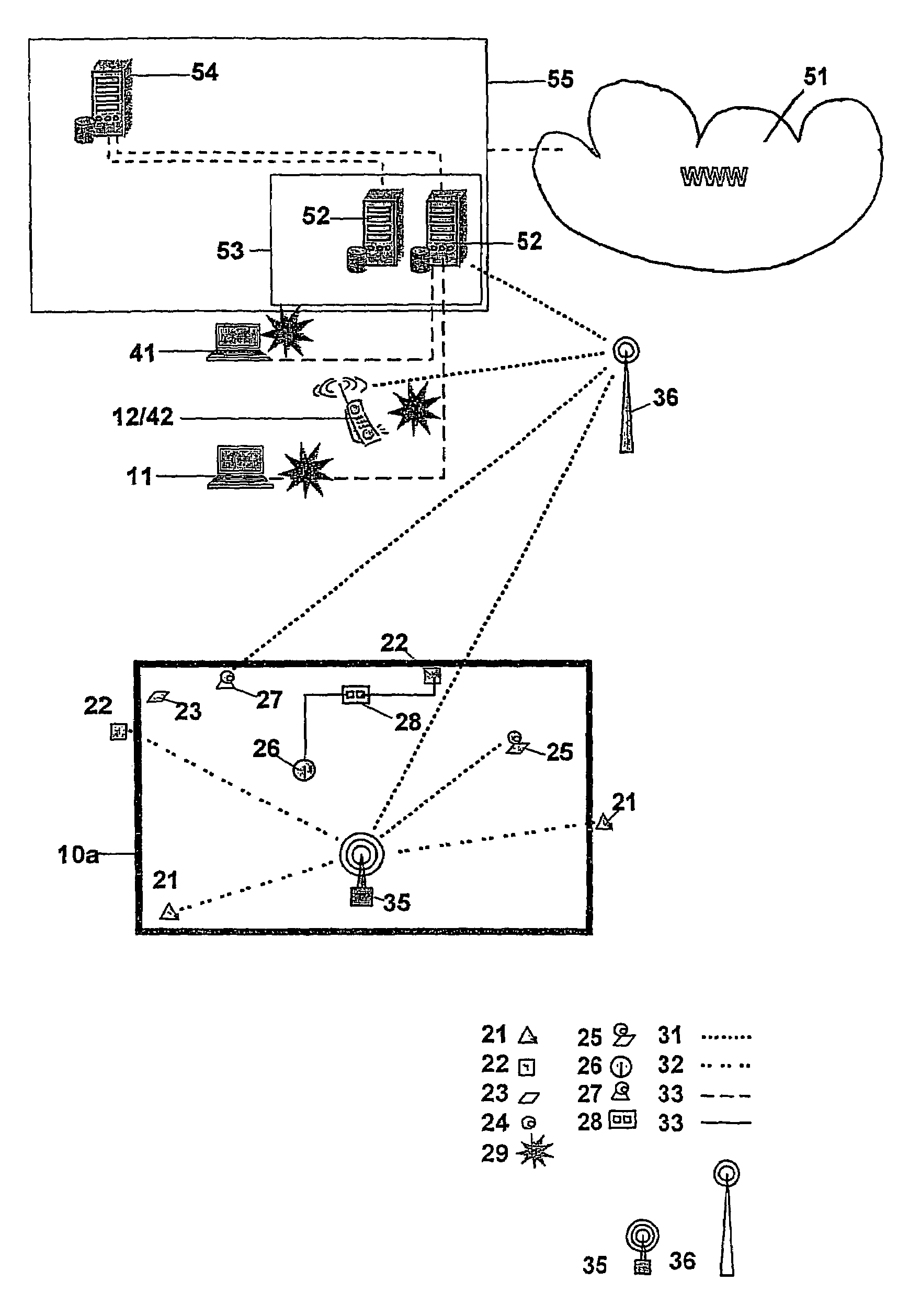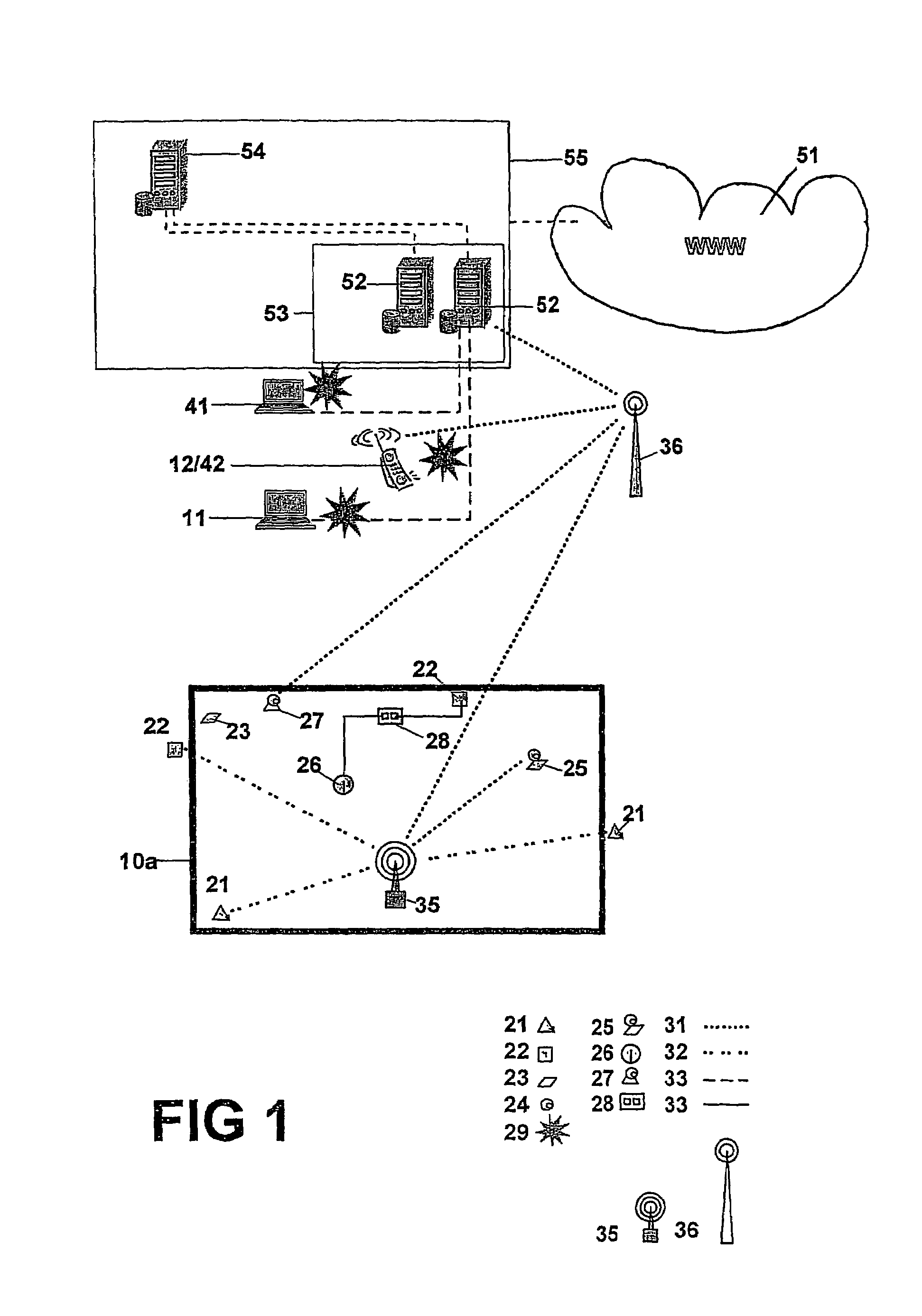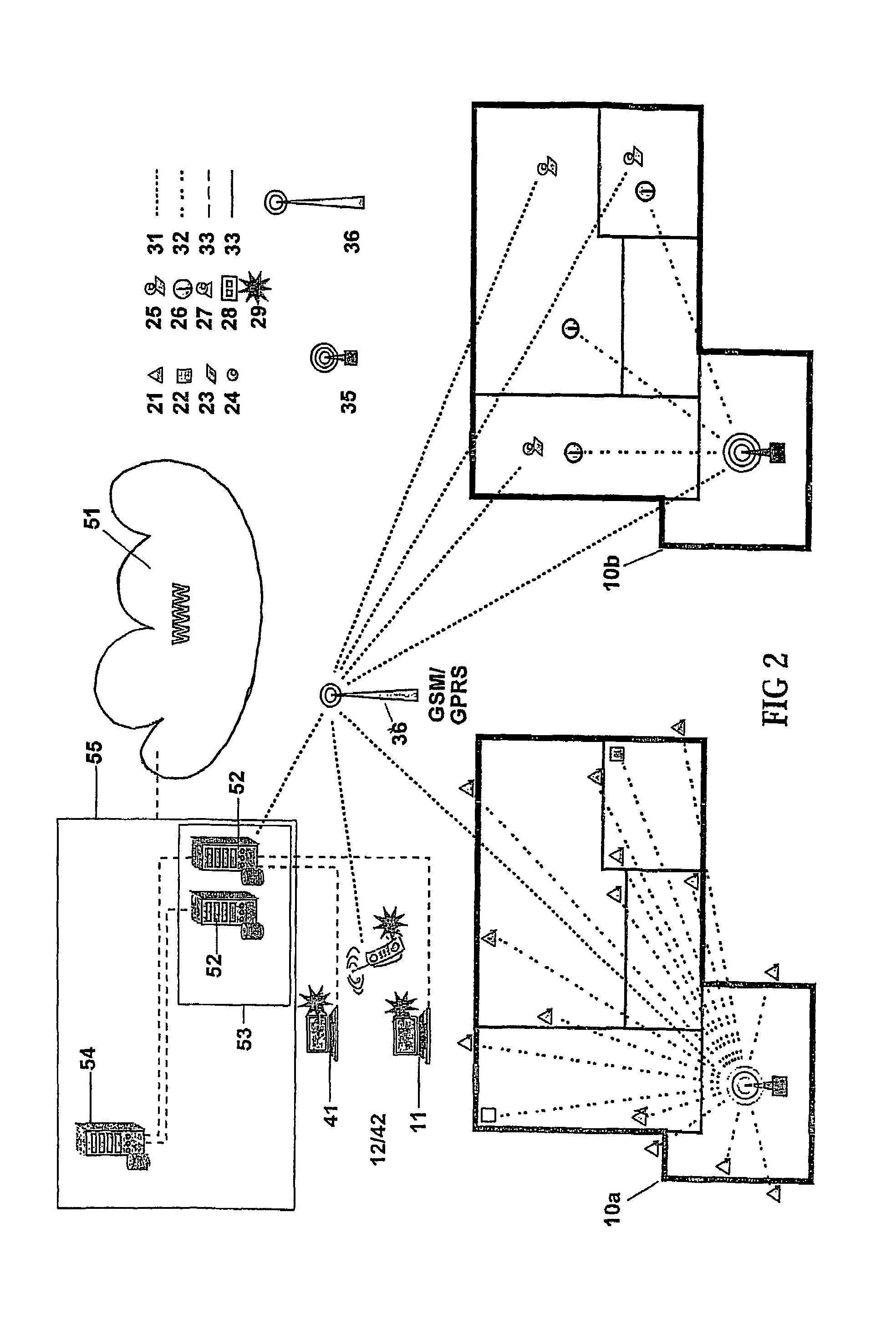Pest control system
a control system and pest technology, applied in the field of integrated methods and systems, can solve the problems of large material and cultural losses to society, households and industries, and impose serious inconveniences
- Summary
- Abstract
- Description
- Claims
- Application Information
AI Technical Summary
Benefits of technology
Problems solved by technology
Method used
Image
Examples
operational example 1
Rodent Protection for Pharmaceutical Merchants
Monitoring
[0150]In the specific solution at area (10a) as illustrated in the left hand part of FIG. 2, a number of detection units (21, 22) as well as capture units with attractant for rodents are set up. The rodent units (21, 22) are provided with IR-based motion sensors in order to detect rodent activity, radio emitter / receiver for communicating with the “global” system server (54), as well microprocessor control. The units (21, 22) are programmed to emit an OK (alive) message, three times over a period of 24 hours, and immediately provide a message about “sensed” rodent activity. All messages are accompanied by the relevant unit's ID code.
[0151]The rodent units (21, 22) communicate with the “global” system server (54) through a local communication server (35) that stores and evaluates received data, which is retransmitted to the “global” system server (54), when critical limits are exceeded, and / or automatically three times over a 24-...
operational example 2
Insect Protection in a Bakery
[0152]At the bakery (10b), as illustrated in the right-hand part of FIG. 2, a number of adhesive plate traps (23) are suspended. Some with UVA blacklight, a special 365 nm light which attracts a broad range of flying insects. Other have a species-specific attractant (pheromone). The insects get caught and remain at the adhesive plate. For each of the insect traps, a programmable combined camera / GMS module (25) is mounted at a controlled distance. In this solution, the camera / GSM module is set to once over a 24-hour period take a high-resolution image of the whole adhesive plate, and subsequently transmit the image via a GSM link station (36) as an MMS message to a coded address being the appropriate user's database section in the “global” system server (54). Here, the image is analysed, compared with the latest previous image taken from the same position, and any newly arrived insects (including their species and number) are recorded.
[0153]In an especial...
PUM
 Login to View More
Login to View More Abstract
Description
Claims
Application Information
 Login to View More
Login to View More - R&D
- Intellectual Property
- Life Sciences
- Materials
- Tech Scout
- Unparalleled Data Quality
- Higher Quality Content
- 60% Fewer Hallucinations
Browse by: Latest US Patents, China's latest patents, Technical Efficacy Thesaurus, Application Domain, Technology Topic, Popular Technical Reports.
© 2025 PatSnap. All rights reserved.Legal|Privacy policy|Modern Slavery Act Transparency Statement|Sitemap|About US| Contact US: help@patsnap.com



